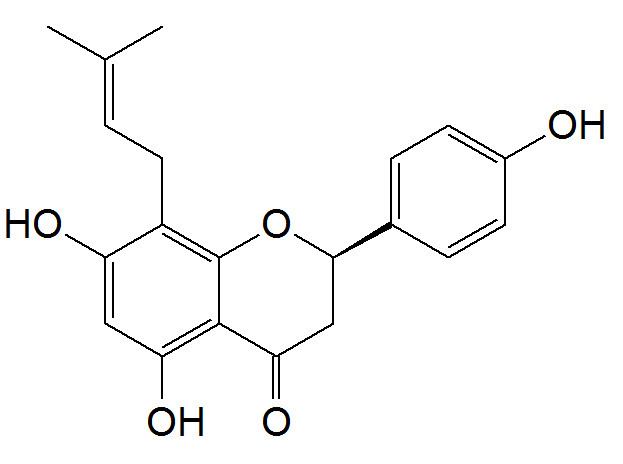 | ||
8-Prenylnaringenin (8-PN), also known as flavaprenin, (S)-8-dimethylallylnaringenin, hopein, or sophoraflavanone B, is a prenylflavonoid phytoestrogen. It is reported to be the most estrogenic phytoestrogen known. The compound is equipotent at ERα and ERβ, and acts as a full agonist of ERα. Its effects are similar to those of estradiol, but it is considerably less potent in comparison.
Contents
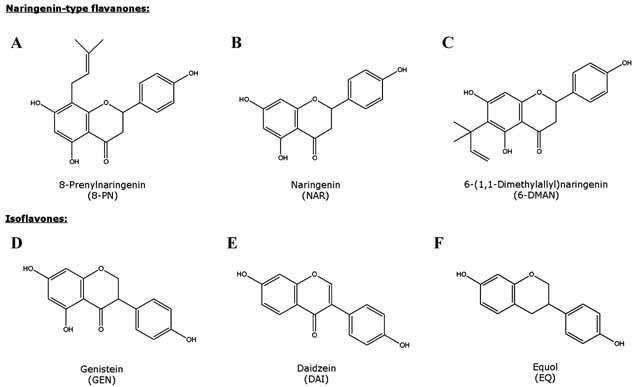
8-PN is found in hops (Humulus lupulus) and in beer, and is responsible for the estrogenic effects of the former. It can be produced from isoxanthohumol in fungal cells cultures, and by flora in the human intestine.

Properties
In an in vitro study, 8-PN and its synthesized derivatives of it demonstrated to have anticancer activity.
Estrogenic
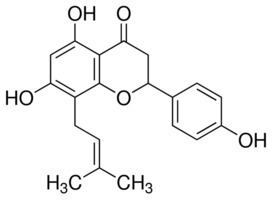
8-PN was shown to preserve bone density and has been demonstrated to reduce hot flashes. 8-PN also induces the secretion of prolactin, and increases other estrogenic responses. The compound binds to and activates ERα more times than it does to ERβ.
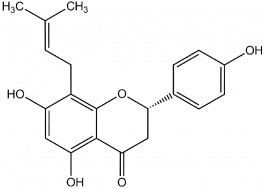
This prenylflavanoid has drawn interest in the study of hormone replacement therapy, and it is comparable to selective estrogen-receptor modulators.
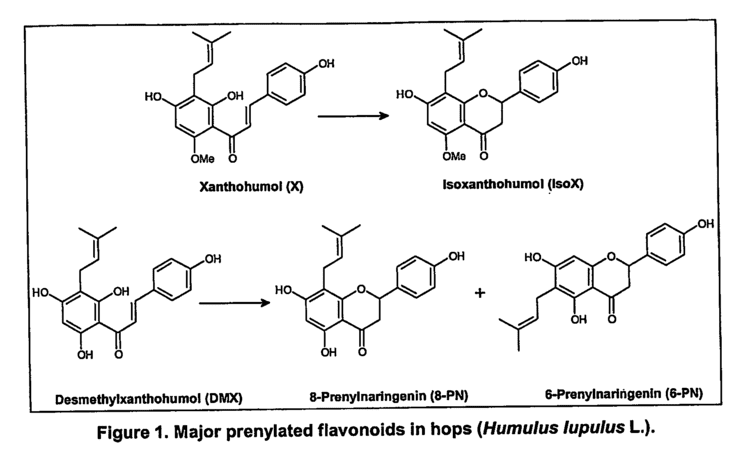
In an in vivo study, 8-PN has activated proliferation of mammary cells. At the concentration found in beer, it is unlikely to have an estrogenic effect in breast tissue. Prenylflavonoids from hops, namely 8-PN, are common in herbal breast enlargement preparations.
Similarly to other estrogens, 8-PN induces the expression of the progesterone receptor in various tissues.
Luteinizing hormone (LH) and follicle stimulating hormone (FSH) are suppressed by 8-PN, indicating that it possesses antigonadotropic properties. 8-PN adversely affects male sperm. The role 8-PN plays in fertility requires further research.
Chemistry
The enzyme naringenin 8-dimethylallyltransferase uses dimethylallyl diphosphate and (−)-(2S)-naringenin to produce diphosphate and sophoraflavanone B (8-prenylnaringenin).
The enzyme 8-dimethylallylnaringenin 2'-hydroxylase uses sophoraflavanone B (8-prenylnaringenin), NADPH, H+ and O2 to produce leachianone G, NADP+ and H2O.
Synthesized derivatives of 8-PN are: 7,4′-di-O-methyl-8-prenylnaringenin; 7-O-pentyl-8-prenylnaringenin; 7,4′-Di-O-allyl-8-prenylnaringenin; 7,4′-Di-O-acetyl-8-prenylnaringenin; and 7,4′-Di-O-palmitoyl-8-prenylnaringenin.
8-Neopentylnaringenin and 8-n-heptylnaringenin are synthetic derivatives of 8-PN.
Etymology
There is another compound, 8-isopentenylnaringenin, also known as sophoraflavanone B, from Sophora flavescens, that could properly be called 8-prenylnaringenin by scientific naming convention.
